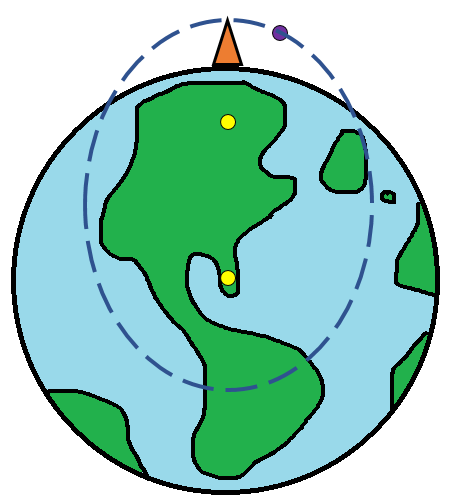Everyone has experienced throwing something into the air. The object goes up, slows down, stops rising, begins to fall, and comes back down gaining speed as it comes down.
If you throw the object straight up, then we have several viewpoints of this flight.
- If you collect vertical height and horizontal distance, then the object follows a linear path through the air, because the horizontal position doesn’t change.
- If you collect vertical height and time, then the function’s graph is a parabola opening down.
- If you collect vertical velocity and time, then the function’s pairs include negative values.
If you throw the object at a angle to the ground, then the trajectory is a parabola
in the air. The height and distance change differently. The height goes up and back
down - a parabola. However, its horizontal distance just keeps increasing - linearly.
In this section we want to compare height, distance, and time for thrown objects.
We want to model these attributes with functions, quadratic functions.
Assumptions
Actually the story above is true only if you assume that the Eath is pretty much flat and that the gravitational force points down at all times. Oh, and neglect stuff like air resistance.
For us throwing rocks into the air, these assumptions are ok.
If you want to launch rockets, then the story must drift a little into elliptic orbits.

If you want, you can add in more details like gravity changes as the object gets higher.
Let’s Not Do That
We aren’t drifting in this section. The Earth is flat for us and gravity points down.
Learning Outcomes
In this section, students will
- analyze quadratic functions.
- graph parabolas.
- parameterize curves.
ooooo=-=-=-=-=-=-=-=-=-=-=-=-=ooOoo=-=-=-=-=-=-=-=-=-=-=-=-=ooooo
more examples can be found by following this link
More Examples of Quadratics